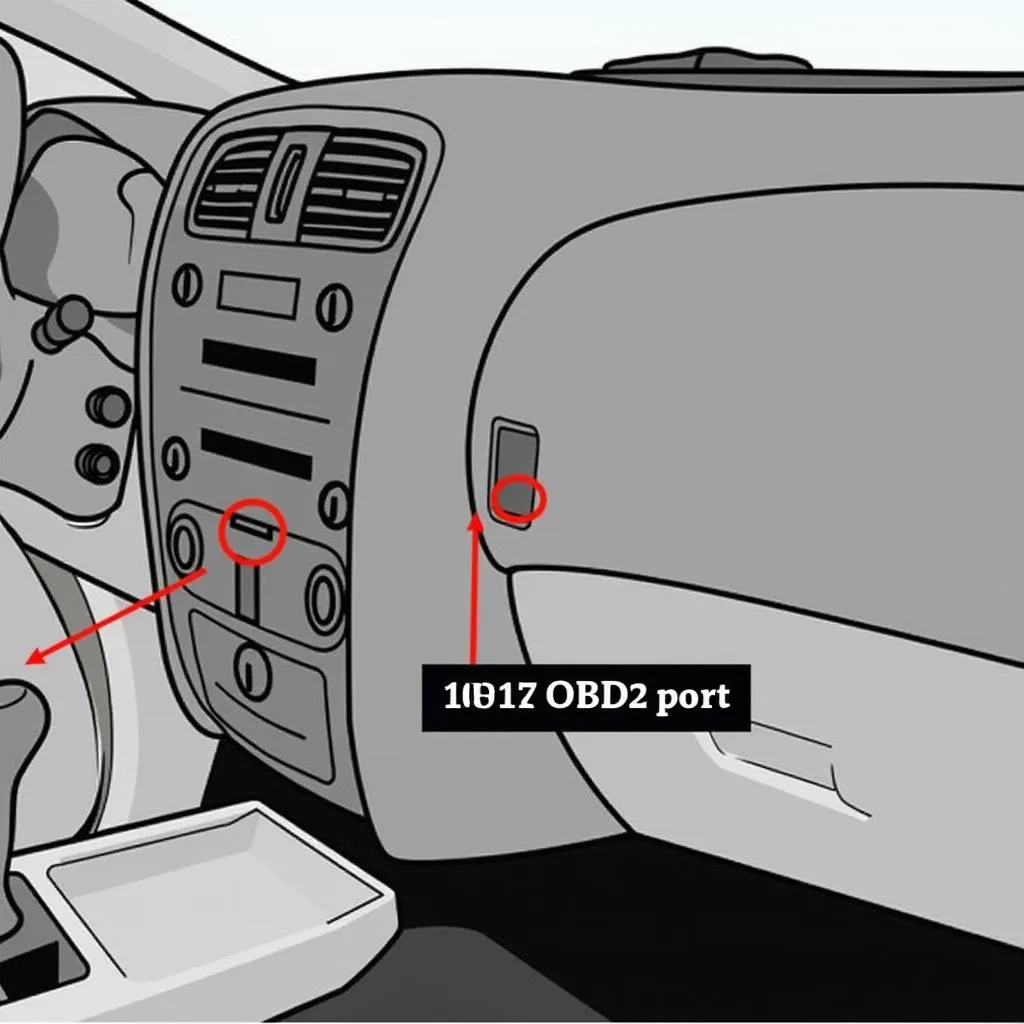The year is 2017. Smartphones are getting smarter, cars are becoming increasingly computerized, and the OBD2 port remains a constant in the ever-evolving automotive landscape. But what exactly is the legacy of the OBD2 port in 2017 vehicles? This article delves into the world of OBD2, focusing specifically on its presence in vehicles manufactured in 2017. We’ll explore its functions, the information it provides, and why it remains a crucial component for car owners and mechanics alike.
The OBD2 Port: A Brief Overview
Before we dive into the specifics of 2017 models, let’s recap what the OBD2 port is all about. OBD stands for On-Board Diagnostics, and as the name suggests, it’s your vehicle’s built-in system for self-diagnosis. The OBD2 port, a standardized 16-pin connector, serves as the access point to this system.
The Significance of the OBD2 Port in 2017 Vehicles
By 1996, all vehicles sold in the United States were mandated to be equipped with OBD2 systems. This standardization marked a significant step forward in vehicle diagnostics. So, for 2017 vehicles, the OBD2 port wasn’t a novelty but rather an established standard.
But what does this mean for you as a 2017 vehicle owner?
- Access to Engine Data: The OBD2 port grants access to a wealth of information from your car’s Engine Control Unit (ECU). This data encompasses everything from engine speed and fuel efficiency to emissions-related readings and sensor performance.
- DIY Diagnostics: With an affordable OBD2 scanner, car owners could perform basic diagnostics at home, identifying potential issues before they escalated. This accessibility empowered car owners and potentially saved them from unnecessary trips to the mechanic.
- Standardized Repair: The standardized nature of OBD2 systems simplified the diagnostic process for mechanics. Regardless of the make or model, the same connector and protocols were used, allowing for more efficient troubleshooting and repair.
Beyond Diagnostics: Expanding Functionality in 2017
While diagnostics remained a core function, the OBD2 port in 2017 vehicles started to showcase its versatility for other applications:
- Performance Monitoring: Car enthusiasts and performance tuners leveraged the OBD2 port to monitor real-time data such as horsepower, torque, and acceleration. This information allowed for performance optimization and modifications.
- Insurance Telematics: Insurance companies began exploring OBD2 port connectivity for telematics devices. These devices tracked driving behavior, offering potential insurance discounts for safe drivers based on real-time data.
- Emerging Technologies: The groundwork for future advancements was being laid. The OBD2 port’s ability to transmit data opened doors for integrating with smartphone apps, enhancing the driving experience with features like trip logging, fuel management, and remote diagnostics.
Common Questions About the OBD2 Port in 2017 Vehicles
Let’s address some frequently asked questions about OBD2 in 2017 models:
1. Where is the OBD2 port located in my 2017 car?
The OBD2 port is typically located under the dashboard on the driver’s side. However, its exact position might vary slightly depending on the car’s make and model.
2. Can I use any OBD2 scanner on my 2017 vehicle?
While most standard OBD2 scanners will work, it’s recommended to check for compatibility with your specific car model. Some advanced scanners offer enhanced features tailored for particular makes or models.
3. Is it safe to leave an OBD2 device plugged in all the time?
Generally, it’s safe to leave a basic OBD2 scanner plugged in for extended periods. However, it’s advisable to unplug more complex devices or those drawing significant power when not in use.
Conclusion: The Enduring Legacy of OBD2
The OBD2 port in 2017 vehicles represents a legacy of standardization and accessibility in the automotive world. It empowered car owners with diagnostic capabilities, streamlined repair processes for mechanics, and laid the foundation for future technological integrations. As cars continue to evolve, the OBD2 port, in its standardized form, remains a testament to the importance of accessible diagnostics and vehicle data in the digital age.


